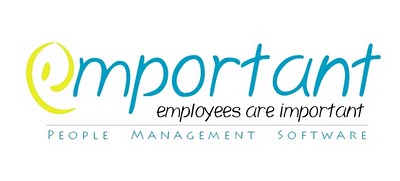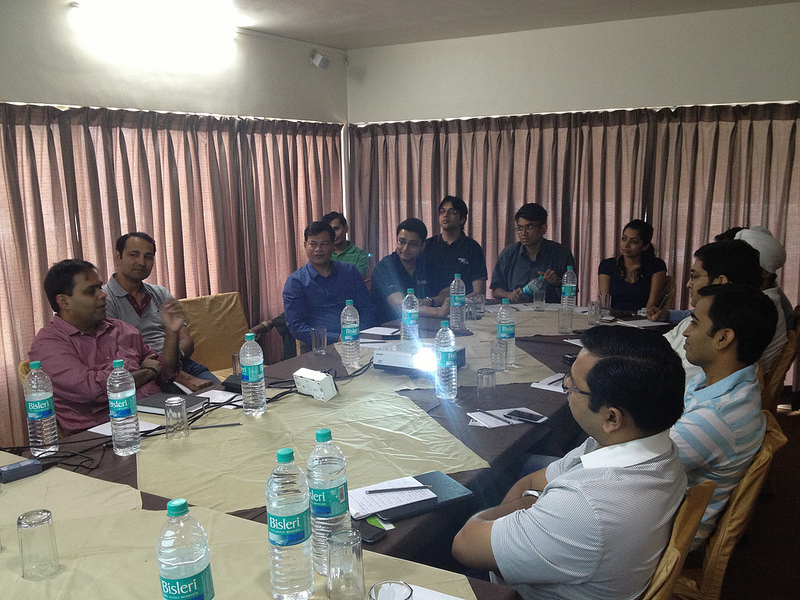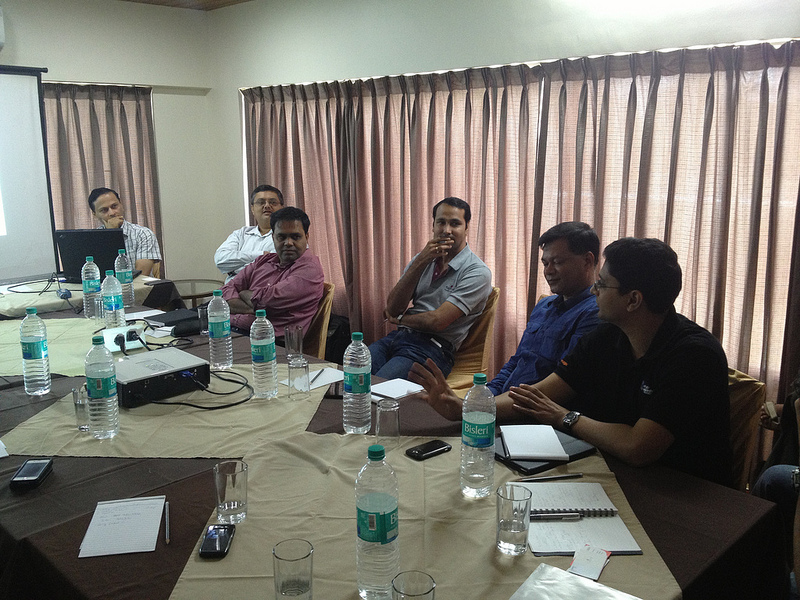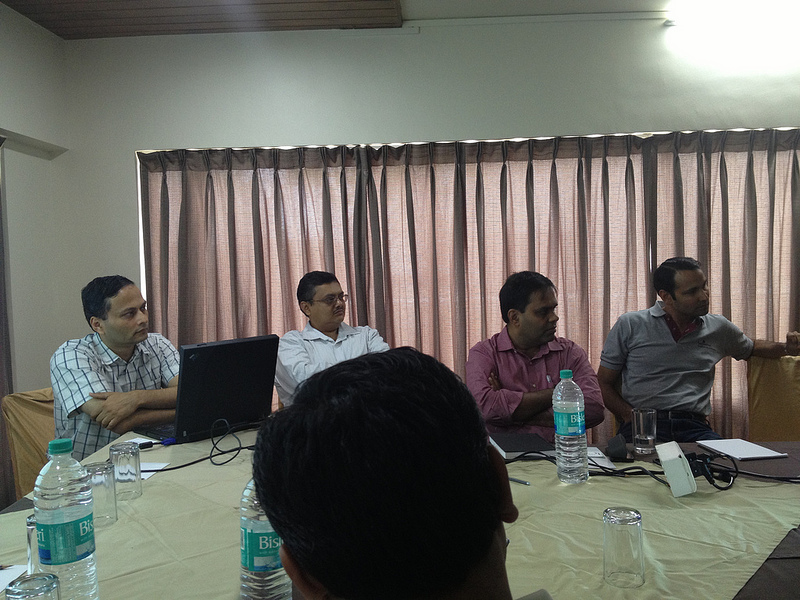Last week I was going through the startup class videos and one particular statement by Sam Altman stuck with me. He said “All successful founders are fanatics”. And YCombinator has seen a whole bunch of them. The way he puts it is very awesome, let me reproduce the statement here:
“The word fanatical comes up again and again when you listen to successful founders talk about how they think about their product. Founders talk about being fanatical in how they care about the quality of the small details. Fanatical in getting the copy that they use to explain the product just right. and fanatical in the way that they think about customer support. In fact, one thing that correlates with success among the YC companies is the founders that hook up Pagerduty to their ticketing system, so that even if the user emails in the middle of the night when the founder’s asleep, they still get a response within an hour.Companies actually do this in the early days. Their founders feel physical pain when the product sucks and they want to wake up and fix it. They don’t ship crap, and if they do, they fix it very very quickly. And it definitely takes some level of fanaticism to build great products.”
Read the full talk here (later)

This statement came alive for me yesterday when I met Pallav Nadhani, the founder of FusionCharts. As he walked us through how he built his company and sharing his experiences and wonderful insights in building his company, his fanaticism was apparent. I am sure everyone who was there, wanted some of it to rub on to them. Even though it was a “RoundTable”, I think Pallav had more experience than a lot of us and pretty much carried the group. He shared some very cool insights, with real life examples and actionable suggestions.
There were 11 of us, all selling business-to-business (B2B) products in the range of $1000 – $75,000, some online, some offline, most on a subscription model, some early stage, a few past the validation stage. Almost half of the founders depended on high touch sales and half had products that were Do-it-yourself. Here is a summary of the meetup:
Pallav’s Story
Pallav shared his story on how he started the company when he was 16, to get some pocket money. He made a charting widget for himself and then wrote an article about it, which became popular. Then one thing led to another and he now runs a company that publishes 90+ types of charts has 23,000 customers and 70 people. Some of the things that he focused from very early on was:
- Reduce all friction for the user who is evaluating the product.
- He promised his users that they would get their money back if they could not build the first chart in 15 minutes. That helped him simplify the on-boarding process and make it very easy for his users.
- He was a one person company for a long time and handled everything from developing the product, documenting it to doing customer support.
Documentation
Pallav’s father is an author of 15 books on accounting and that gave him a strong foundation to document his product very well. This was particularly important since his target audience was developers who needed good documentation to use the product.
- Pallav himself wrote 3000 to 4000 pages of documentation and still reviews every word that is added by his team.
- Documenting the product gave him key insights as a user and helped him refine and debug the product.
- Every time someone asks a question. His team is forced to answer using a public document. This made sure that the same question did not get asked again and also created a good knowledge base for his product.
- He learned from his father on how to structure documentation (with headings, sub-headings etc) so that the reader can quickly find out the relevant sections to read.
There is another interesting anecdote. jQuery was a late entrant to javascript libraries and according to its creator John Resig, it was because it was the first one that was properly documented.
Marketing and First Impressions
Pallav’s hypothesis is that all sales / conversions are driven by “Fear” or “Greed” and products must highlight these in their marketing copy, specially the headling. He even asked all of us the rephrase the core message of our product to appeal to one of these emotions. I had strong reservations on whether this was correct and if this lead too to much focus on top of the sales funnel (new visitors). Either way, the group seemed convinced. While I thought it went went with Pallav’s aggressive and “switched-on” approach, I have my doubts if it works for all kinds of products. Products have the personalities of their founders embedded in them, and I feel its best to stick with the approach that goes best with the philosophy of the product and the creator.
Pallav also referred Kevin Hale’s analogy of building a customer relationship like a marriage and how the first visit of a customer on the website is like dating. For more on this, I would recommend Kevin Hale’s enlightening talks on the matter (later!).
Some other interesting points that were discussed were:
- Classify your traffic into different personas. For Fusion Chart, it is the Developer, Product Manager and Designer.
- Deeply understand each persona. Appreciate that they are overloaded with information and identify openings in their daily routines where you can reach them.
- For security startups, a weekly roundup of major reported breaches worked well when sent at 8.30 in the morning.
- Online marketing has evolved from “carpet bombing” to “sniper”. Audience have to be segmented and messages have to be finely targeted.
- It is important to reach the users main Inbox and not the promotions box. So keep the mail personal and do not add an unsubscribe link.
- Pallav showed how he used WebEngage for conducting surveys on their visitors and how he tested his hypothesis. For example, his survey would ask if a visitor intends to pay for the product on offer or select an open source alternative. Based on the feedback, Pallav said he would change the marketing copy.
- He also used VWO for A/B testing and showed us an example on which one of “HTML5 Charting” or “Javascript Charting” resonated more for the user.
- Asking feedback from customers who had evaluated a product was also important. A simple email with the subject “5 minutes of your time for 5 questions” gives Pallav great customer insight.
- He said he tests all kinds of hypotheses and keeps experimenting on the message. Examples:
- Do users like a simple or complex layout
- How many fields should a form have
- What colour a button should have
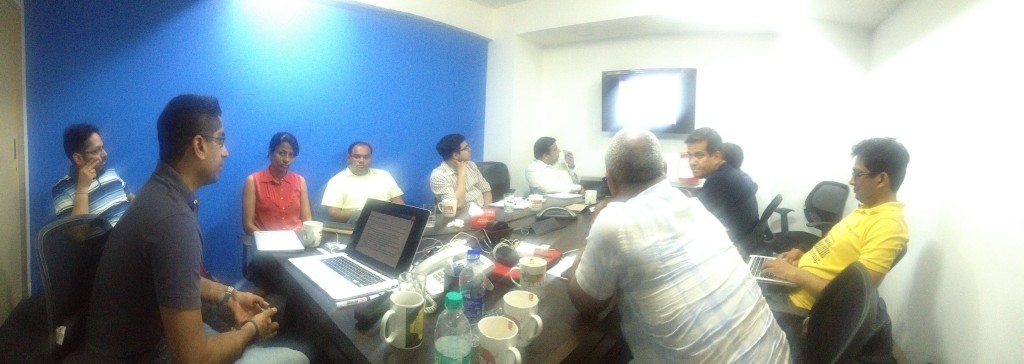 Content Marketing
Content Marketing
We spent a whole bunch of time discussing and sharing great insights on Content Marketing. Sahil Parikh of BrightPod.com shared his experiences in content marketing. He has built a product for the marketing community and started a blog with the purpose of reaching out to this community. It took him six months of building the blog before he saw some returns. He has hired two content writers and produces 3 to 4 blog posts a week. He shared that aggressive content marketing teams target producing one post a day. He also reached out to Indian authors on popular blogs like ZDNet and TheNextWeb and pitched the Indian product angle that got him attention. Sandeep Todi of Emportant.com shared that he bumped into a content writer for SiteHR, a popular HR portal and is how working with her to build content for his product.
Content marketing seemed like a favorite of strategy of a Lean Sales team but again it boils down to execution. It is very hard to product high quality content and as more and more people start getting good at it, the bar keeps on increasing.
Some content ideas / anecdotes shared were:
- Interview / Talk Show Series: Publish interviews with customers and thought leaders in the domain
- Use big brands in your blog posts. Examples from Fusion Charts:
- How Unilever / Walmart / P&G uses data visualization
- Act on industry events:
- Security Breaches
- Flipkart Billion Day flop
- Home Depot breach
- “News Jacking” – Connect popular news items to your product.
- GangamStyle in numbers
- Infographics on FIFA World Cup
- 10 infographics on Fitness Apps
- Put customer logos on your site, content unless the customer objects. Don’t mention it in your contract or it will trigger a red flag.
- Allow your site content to be reproduced.
- Curate, collate good content from other site and credit the original author.
- Get quotes from industry influencers, the will also ReTweet your content.
- Speed is of essence. Create great content quicly (yeah right!).
- Publish whitepapers. They are popular with higher management.
Sales Funnel
Pallav walked us through the various parts of the sales funnel.
[From his slides]
- Awareness (ads, blog, event, word-of-mouth…)
- Initial Visit
- Different channels / different ROI
- Best channels = low cost, high ROI
- Engagement
- Trial, case study, whitepaper, anything that could give you email AND other information
- Nurturing
- Mix of product, marketing and sales
- Sales job: get the customer on the call and do aggressive follow up
- Closing
- Handover from sales to client success.
- Repeat business through subscriptions, up-sells or cross-sells.
Pricing
There was a very heated discussion on pricing. Pallav was of the mainstream industry opinion that price is a reflection of value. The higher the price, the better the quality of customers and revenue. There was a discussion on discounts and how in high touch sales, discounts are a bane. Here Pallav shared that adding artificial constraints to negotiate. For example, you can extend the support by 3 months instead of giving a discount, or increase the number of servers etc.
Open Source
There was some resistance and suspicion from the group in discussing this and understandably so because of the nature of the software products business that depends on Intellectual Property Rights. We did touch upon this briefly and why based on our (ERPNext) experience we see open source as a great way to not only reach out a new generation of users but also believe in an alternative way of doing business.
 Conclusion
Conclusion
It was great to learn from Pallav, and we thank him for sharing so many suggestions and learnings. Also a big thanks to him for openly sharing specific insights and walking us through an A/B test or testing an hypothesis. This is also a great initiative by Avinash Raghava and iSPIRT, the think-tank/lobby group for Software Products to bring together entrepreneurs so that they can share tips and build networks. It would have been a bit better if there was more unstructured time so that there would be better interaction between the group, to build deeper relationships between the founders. Also a big thank you to FreeCharge.in for hosting the event and providing lunch.
Finally what really matters is execution. For me the biggest takeaway was that the product is a reflection of the creator / founder and it was important that the founders are obsessed with each detail of the product and its quality and also work with the energy that is required to do so much work. For that it is important that they see success early on as Pallav did and the once they are on to something they make sure that they do not lose it.
Specifically, for me it reminded me that its time to go back to fixing the documentation!


